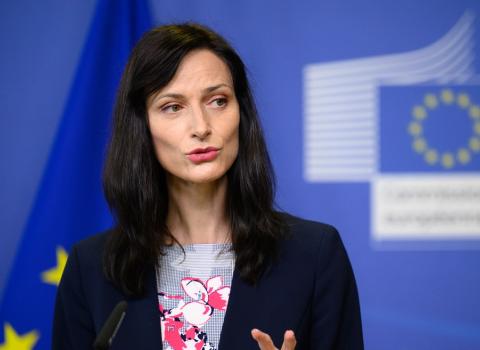The UK government claims the Turing scheme will fully replace Erasmus+, but the two schemes have different aims.

In a major post-Brexit move, the UK government kicked off its own student mobility programme with an announcement that its Turing Scheme will fund over 40,000 students for education and training placements across 150 countries.
According to the outcomes of the first funding round, 363 projects were approved to receive £96 million in grants to send students to Canada, Japan and the US, but also in several European countries.
The Turing plan was first announced last year after the UK government had decided to not renew its participation in the EU’s exchange programme Erasmus+. The UK government argued that the financial contribution demanded by the EU for Britain to join Erasmus+ was too high. But critics of the new scheme say it is more limited than the EU programme, without the reciprocal arrangements under which universities exchange students rather than just send them abroad.
The scheme is named after modern computing pioneer Alan Turing, who studied abroad at Princeton University before going on to crack the Enigma code in the second World War.
The UK government says the Turing scheme is a replacement for Erasmus+ and will give young people the opportunity to work and study abroad while boosting post-Brexit Britain’s ties with international partners after leaving the EU.
“By strengthening our partnerships with the finest institutions across the globe, the Turing Scheme delivers on the government’s post-Brexit vision, and helps a new generation grasp opportunities beyond Europe’s borders,” said education secretary Gavin Williamson.
Of the total number of placements to be funded this year, 28,000 will be allocated for university students. In the 2018-19 academic year, the UK had sent 18,300 university students abroad via Erasmus+.
“I look forward to seeing the innovation and expertise our students, pupils and vocational learners bring back to this country from their journeys to every corner of the globe – from Canada to Japan, and Australia to the United States,” said universities minister Michelle Donelan.
Nearly half of the awarded students will come from universities with fewer international ties located in less well-off regions of the UK. “It’s encouraging to see colleges taking up all that Turing can offer – including colleges that are newer to international partnerships – exploring exchanges across a broad range of countries,” said David Hughes, chief executive of the UK Association of Colleges.
“In terms of numbers, [the scheme] has an impressive amount of disadvantaged students,” Thomas Jorgensen, senior policy coordinator at the European University Association (EUA) told science|Business.
The government has yet to provide details about how many students will end up going abroad. The number “will probably be much lower than the numbers that have been bid for,” said Paul James Cardwell, a professor at City Law School, University of London.
“We also don’t know whether these placements have been arranged and confirmed and, crucially, how much funding will be allocated to each participant,” said Cardwell.
The UK government claims the Turing scheme will fully replace Erasmus+, but the two schemes have different aims. The Turing scheme is more global, but unlike Erasmus+, it is not an exchange programme, hence it does not allocate funding for foreign students to come to Britain. The Turing scheme “does different things at a different scale,” said Jorgensen.
Any comparison to Erasmus+ is “only rhetoric,” said Jorgensen. “If hadn’t been for Brexit and the UK decided to launch a programme like this, which other Erasmus+ countries also have, I think we would have barely noticed,” he said.
Many EU countries are still disappointed that the UK decided to pull out of Erasmus+ at the very last moment during the negotiations for a new EU-UK trade deal. “If the UK wanted to be part of Erasmus politically it would be possible, but very far in the future,” said Jorgensen.





 A unique international forum for public research organisations and companies to connect their external engagement with strategic interests around their R&D system.
A unique international forum for public research organisations and companies to connect their external engagement with strategic interests around their R&D system.